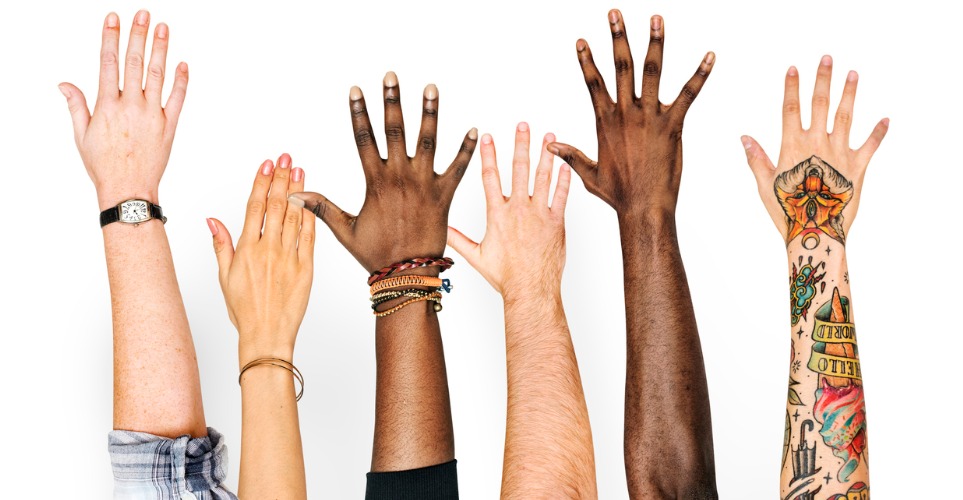Top Priority of 2020: Workplace Diversity?
- August 25, 2020
- Blog

The year of 2020 has brought about many unexpected challenges. Although the COVID-19 pandemic might have presented some particularly unique challenges, many did not expect issues of discrimination to also be at the top of the list of 2020 concerns. As fights against racism, sexual abuse, police brutality, gender discrimination, and LGBTQ discrimination persist, the social climate and laws are changing, and businesses must adjust accordingly. As a result, we will continue to see many changes in how we envision diversity and inclusion in the workplace.
Diversity educator and creator of the “Blue Eyes/Brown Eyes Exercise,” Jane Elliott, said, “This country isn’t a melting pot. Think of this country as a stir fry. That’s what this country should be. A place where people are appreciated for who they are.”
The movement toward greater diversity and inclusion can be catapulted by businesses’ efforts in maintaining fair employment opportunities and encouraging diversity in ideas, appearance, backgrounds, perspectives, and skills in the workplace. There may be more pressure now than ever for businesses to be hypercritical of how they can commit to anti-discrimination and equality in the workplace. This blog post will provide a brief overview of some of the laws that protect diverse people in the workplace and provide suggestions as to how businesses can create or revamp diversity initiatives, policies, and procedures.
The Equal Employment Opportunity Commission (“EEOC”) enforces many federal laws that protect marginalized groups in the workplace. For example, the EEOC enforces Title VII of the Civil Rights Act of 1964, which prohibits discrimination on the basis of race, color, religion, national origin, and sex. Additionally, the EEOC enforces the Equal Pay Act of 1963, which prohibits distinctions in pay amongst men and women for performing the same work, and Title I of the Americans with Disabilities Act of 1990, which prohibits discrimination against disabled persons. The EEOC enforces these federal laws, amongst many others, to eliminate discrimination in all aspects of employment.
State and local governments also enforce employment laws that provide even greater anti-discrimination protections for employees. In California, the Department of Fair Employment and Housing (“DFEH”) enforces laws, such as the Fair Employment and Housing Act (“FEHA”), that prohibit workplace discrimination against applicants and employees. Recently, California laws have been amended to provide more inclusive application of its laws and greater protections for its employees. For example, at the top of this year, the Stop Harassment and Reporting Extension Act (“SHARE Act”) was passed extending the statute of limitations to up to three years for workplace discrimination and harassment claims submitted to the DFEH. Additionally, last year, the Create a Respectful and Open Workplace for Natural Hair Act (“CROWN Act”) was passed, expanding the definition of discrimination on the basis of race to include natural hairstyles.
Despite the existence of longstanding laws and the development of new legislation, the reality is that many people often experience discrimination in the workplace. Recently, social changes and political movements have encouraged people to be more expressive regarding their experiences with discrimination in the workplace.
One common pattern seen in internet testimonies of workplace discrimination is that many people do not realize what words or actions may be discriminatory. Microaggressions are acts or communications that convey an underlying generalization or implicitly reference stereotypes, prejudices, and biases. These discriminatory undertones often go unchecked, as many people do not realize their biases. Conversely, often people who are harmed by microaggressions, are also sometimes unaware that they are experiencing discrimination, and for those who are aware, they may not know how to confront these biases. Microaggressions can have a cumulative impact on workplace environment, productivity, and performance. Rachel Murray, CEO of She+ Geeks Out, a company aimed at woman empowerment through workplace diversity and inclusion, described experiencing microaggressions regularly as “death by a thousand papercuts.”
Microaggressions in the workplace can take many forms, and often include assumptions or indirect remarks about race, religion, gender, and sexuality. It is important to acknowledge that even seemingly unharmful questions or comments can have triggering effects on the receiving person. The following are some examples of microaggressions that occur in the workplace:
- relating someone’s racial background or cultural dispositions to their position or work ethic
- expecting someone’s demeanor or mannerisms to mirror traditional notions of femininity or masculinity
- correlating someone’s religious beliefs to their willingness to participate in conversations or activities
- asking questions about someone’s physical features based on their racial or gender identity
- assuming someone’s abilities based on their age
- dismissing someone’s concerns for discrimination and inequality because they do not impact you.
The broad nature of these examples highlights the number of statements, questions, and actions that can be considered microaggressions despite the actor’s or speaker’s intention. Discrimination, even as subtle as a microaggression, cannot go unchecked. The only way to lessen discrimination in the workplace is to address it.
Employers can facilitate creating a more inclusive work environment by implementing “open door” policies for addressing discrimination. It might even be advised to hire a diversity and inclusion liaison to supplement human resources personnel. Encouraging a work environment that allows the free flow of communication without isolation, embarrassment, or retaliation is important.
To be more proactive in lessening discriminatory instances, employers can mandate training for new and existing employees. For example, Cornell University offers an online certification for completion of a diversity training – click here for more information. In addition to Cornell’s Diversity and Inclusion Certificate, there are many other online education and training resources.
Other options for addressing and lessening workplace discrimination may include:
- providing educational materials on diversity and inclusion to every employee
- creating original written materials, which include standards, policies, and procedures regarding discrimination
- hosting a regularly scheduled open forum for employees to express broad concerns
- setting up a mentorship program, buddy system, or team building exercises to encourage healthy relationship building
These suggestions are great options to consider when challenged with developing or enhancing diversity and inclusion efforts. Nevertheless, businesses and employers should get creative and adjust to their employee demographics. As the year of 2020 lights a path to a more inclusive world, businesses that are innovative in their approach to equality and inclusion are likely to experience greater success and vaster consumer support.










